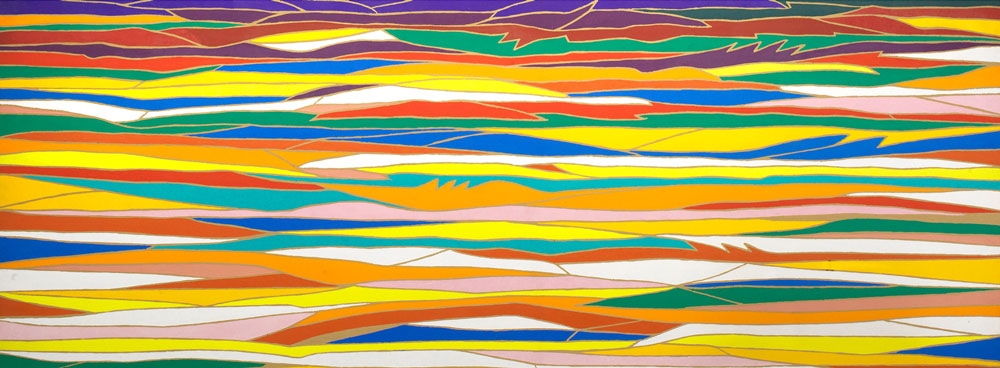Piero Dorazio, Chromatic Fantasies (1948-82) | Tornabuoni Art
Showing in the depths of an interminable winter, this blast of colour, at Tornabuoni until springtime, comes as a welcome relief – even a joy.
Dorazio isn’t exactly a heavy hitter in the pantheon of post war Italian painting. In fact, this is billed as his “first London show in a generation” (though he was a big part of a group show up the road at Mazzoleni last year). He gave the Futurist tropes of bustle and movement a new spin in the 50s, after a formative meeting with the then-elderly Giacomo Balla. At Tornabuoni, there are a couple of small, almost figurative early works that are obviously indebted to the early 20th century master. But Dorazio soon moved on to create a style of his own.

What brings the works together is their use of colour. Dorazio wanted to capture light in his paint: in bright and uniform hues, in strobing and waving patterns and, as the years passed, on an increasingly large scale. The top floor of this exhibition is dominated by three huge canvases from the 70s: my favourite was 1972’s Tre Acque 2: a dense, wide network of blastingly bright colour, with none of the segments overlapping – and the canvas showing through at each intersection.
Damocle (1968) changes the orientation, with uniform diagonal strokes pointing downwards, streaking through the tall, narrow canvas to meet the ground. Again, the pattern is almost, but not quite, uniform. These later works are great feats of technical skill: in order to leave the canvas sections exposed, the blocks of colour seem to have been applied in a single layer of thick paint. Though, for some reason, and unlike the small early paintings, they’re unsigned.
I couldn’t help comparing Dorazio’s colours and patterns with the Bridget Riley works currently on show at Zwirner. Both artists worked on a large scale and tend towards abstraction and repeating patterns. Both are defined by their use of colour. Both, in fact, participated in the famous Responsive Eye exhibition at MOMA in 1965. But where Riley aims for intellectual enquiry, a reduced palette and clinical repetition, Dorazio’s patterns and shapes are more wide-ranging, more organic - sometimes even a bit unevenly applied - and a lot more fun.
Piero Dorazio, Chromatic Fantasies (1948-82) is at Tornabuoni Art (London). 24 January - 13 April, 2018.